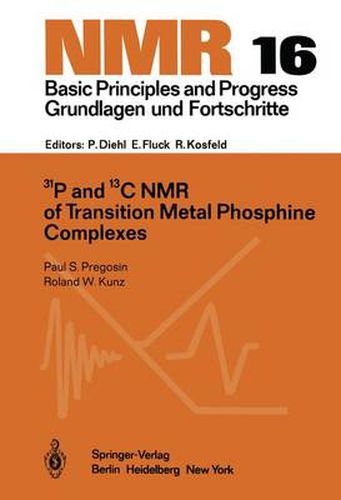Readings Newsletter
Become a Readings Member to make your shopping experience even easier.
Sign in or sign up for free!
You’re not far away from qualifying for FREE standard shipping within Australia
You’ve qualified for FREE standard shipping within Australia
The cart is loading…






This title is printed to order. This book may have been self-published. If so, we cannot guarantee the quality of the content. In the main most books will have gone through the editing process however some may not. We therefore suggest that you be aware of this before ordering this book. If in doubt check either the author or publisher’s details as we are unable to accept any returns unless they are faulty. Please contact us if you have any questions.
For almost a quarter of a century the words nuclear magnetic reso nance were synonymous with proton I,leasurements. During this period the literature abounded with a seemingly infinite variety of 1H NHR studies concerned primarily with carbon chemistry. Occasionally a novel nucleus was studied and, even in those early days, the poten- 13 14 31 19 tial offered by C, N, P and F was clearly recognized. Despite the allure, the technical difficulties involved in measuring some of these nuclei were far from trivial. Small magnetic moments and low natural abundance in combination with spin-spin coupling from other nuclei, mostly protons, resulted in a signal-to-noise problem whose severity effectively excluded the study of metal complexes with unfa vorable solubility characteristics. The first important breakthrough came with the advent of broad band 1H-decoupling. For example, the featureless broad 31p resonance associated with the commonly used ligand triphenyl phosphine is converted to a sharp, more readily ob served singlet when wide-band decoupling is employed (see Fig. 1). Despite this improvement investigation of more interesting molecules, such as catalytically active complexes was forced to await the devel opment of Fourier Transform methods since only with relatively rapid signal averaging methods could sufficient signal-to-noise ratios be achieved.
$9.00 standard shipping within Australia
FREE standard shipping within Australia for orders over $100.00
Express & International shipping calculated at checkout
This title is printed to order. This book may have been self-published. If so, we cannot guarantee the quality of the content. In the main most books will have gone through the editing process however some may not. We therefore suggest that you be aware of this before ordering this book. If in doubt check either the author or publisher’s details as we are unable to accept any returns unless they are faulty. Please contact us if you have any questions.
For almost a quarter of a century the words nuclear magnetic reso nance were synonymous with proton I,leasurements. During this period the literature abounded with a seemingly infinite variety of 1H NHR studies concerned primarily with carbon chemistry. Occasionally a novel nucleus was studied and, even in those early days, the poten- 13 14 31 19 tial offered by C, N, P and F was clearly recognized. Despite the allure, the technical difficulties involved in measuring some of these nuclei were far from trivial. Small magnetic moments and low natural abundance in combination with spin-spin coupling from other nuclei, mostly protons, resulted in a signal-to-noise problem whose severity effectively excluded the study of metal complexes with unfa vorable solubility characteristics. The first important breakthrough came with the advent of broad band 1H-decoupling. For example, the featureless broad 31p resonance associated with the commonly used ligand triphenyl phosphine is converted to a sharp, more readily ob served singlet when wide-band decoupling is employed (see Fig. 1). Despite this improvement investigation of more interesting molecules, such as catalytically active complexes was forced to await the devel opment of Fourier Transform methods since only with relatively rapid signal averaging methods could sufficient signal-to-noise ratios be achieved.